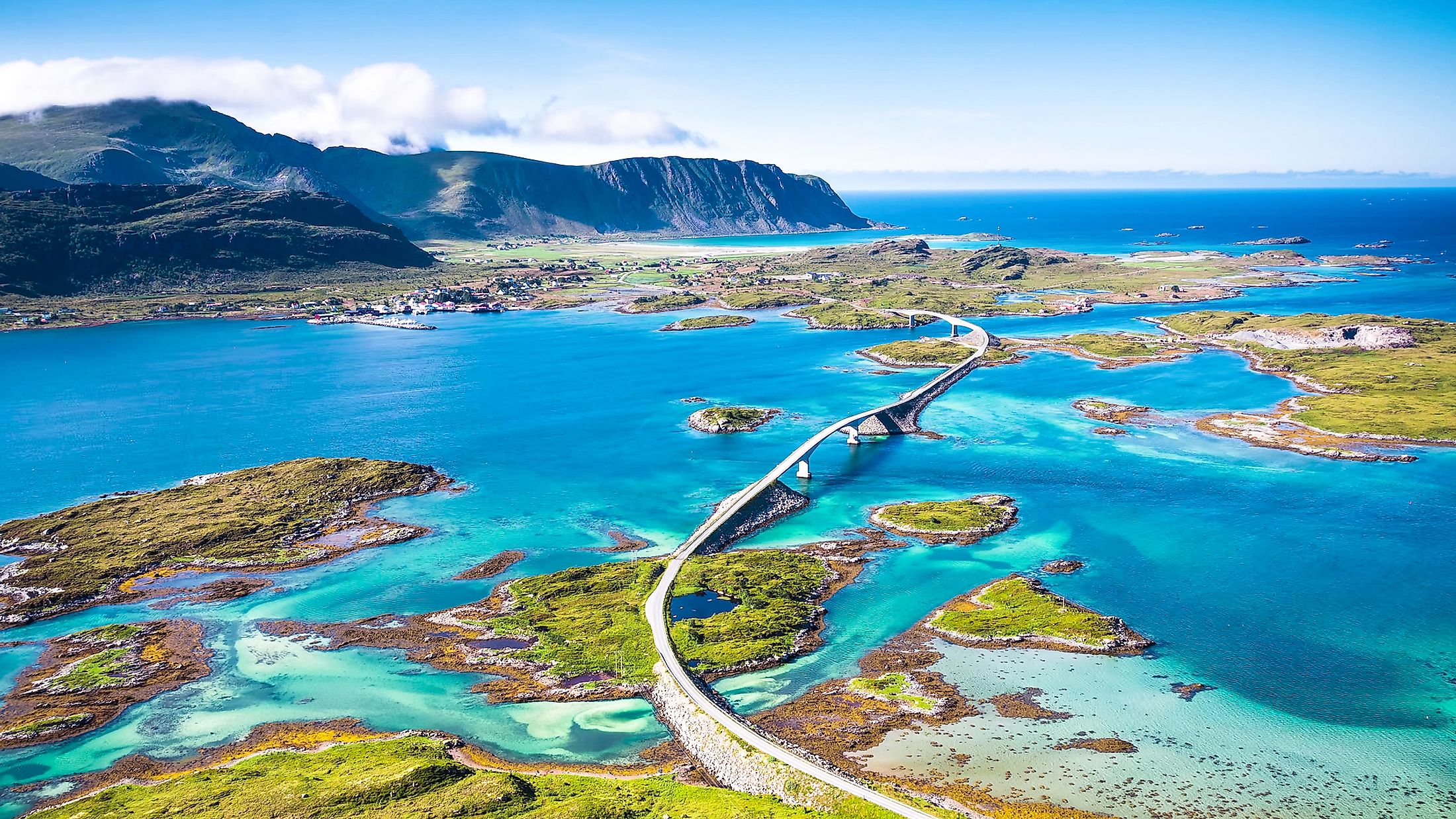
Atlantic Ocean Road, Norway
Norway's Atlantic Ocean Road is a cultural heritage and a National Tourist Route. This Norwegian highway is a long stretch of County Road 64 that starts in Averoy and continues over the Norwegian Sea and numerous islands to connect to Eide on the mainland of Norway. Some portions of this breathtaking road have been described as a "roller coaster road". All told, the Atlantic Ocean Road is 8.274 kilometers long. The drive goes over seven bridges built on several islands, with four rest stops and vista points along the way. Unlike most destinations, this is one of the few places where tourists come to visit more during stormy weather, as the experience and the view can't be beat on stormy days.
Brief History
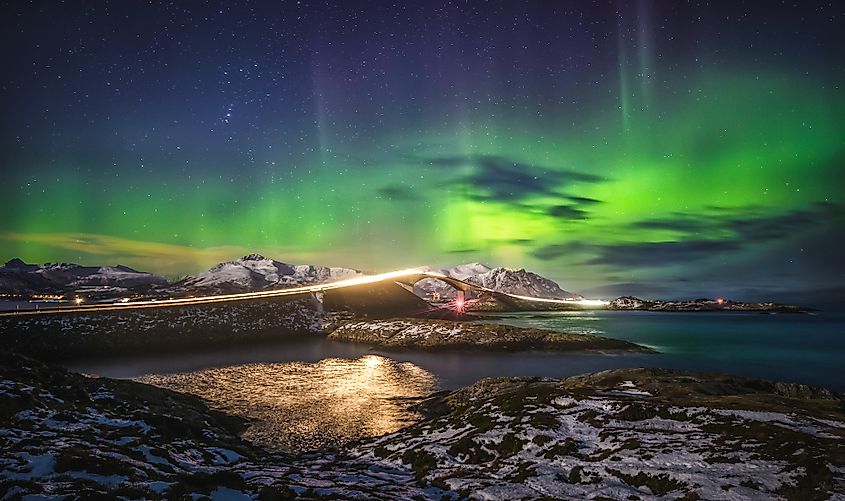
The Norwegian Public Roads Administration built the road, which opened on July 7, 1989 as a toll road. By June of 1999, its construction cost had been recouped, so the toll was removed. Tourists and locals come to enjoy the drive and experience the natural scenes in its proximity. The year 2009 alone saw about 258,654 visitors, and car television commercials have also been shot on the bridges by more than 10 car manufacturers. Anybody wishing to experience the Atlantic Ocean Road can fly to Norway, and getting there is easy with many international flights from any point in the world arriving in the country daily. The drive over the road itself can start from either end: that at Averoy, or Eide on the mainland.
Driving Through Paradise
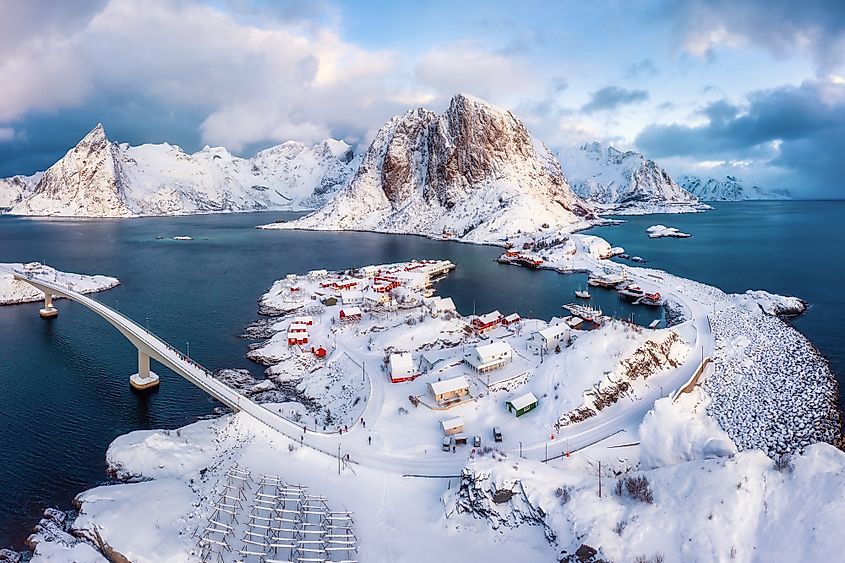
The whole stretch of this drive is full of ocean vistas and marine life that could otherwise only be experienced on a boat. But driving and seeing it from above, however, is a unique experience all to itself. There are four vista points that allow visitors to eat, rest, and enjoy the ocean views. The different islands that are part of the road offer their own brand of views of moorlands, verdant green scapes, bays, and fishing villages. Opportunities to fish from the islands' shores or from on a boat abound here as well. An enterprising tourist could travel the whole span by car, bike, or backpacking. There are also many commercial facilities for the tourists to lodge and dine along and near to the Atlantic Ocean Road.
Waters Rich In Marine Life
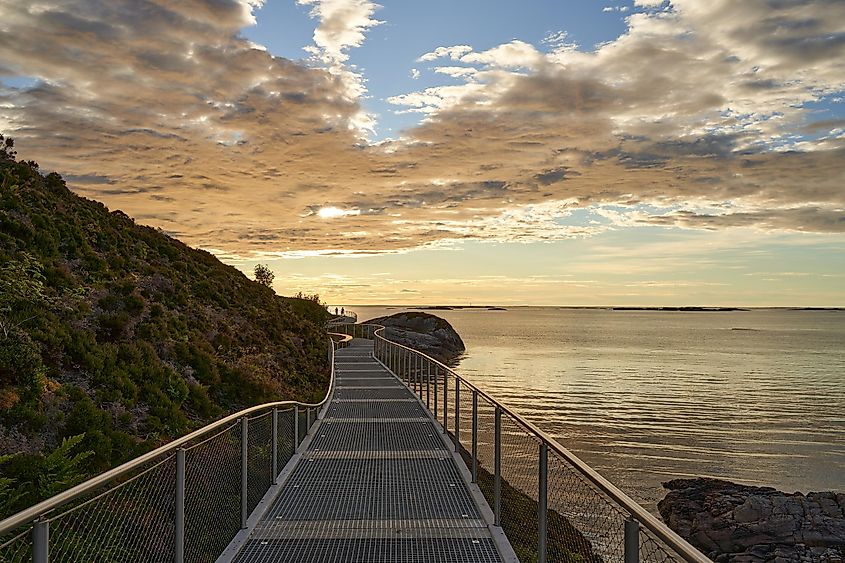
Tourists can experience Norway's mountains, seas, fjords, lakes, and well-stocked rivers from Atlantic Ocean Road. The drive on the bridges and islands proffers the tourist an opportunity to watch whales, seals, and sea birds, depending on the different times of the year they visit. Sparse vegetation covers the islands and dot the the span of the drive, while activities such as diving offer an up-close and personal view of marine life. In Eide, on the mainland, one can visit the Gaustadvågen Nature Reserve and Wetland Area, which is home to the whopper swan and other "Endangered" species of birds. Another must do is the Eriklia Activity Farm that has the Nordland/Lyngshests, one of the rarest living breeds of horse. The same farm also features some 15 different species of other animals to see.
Notes On Safety
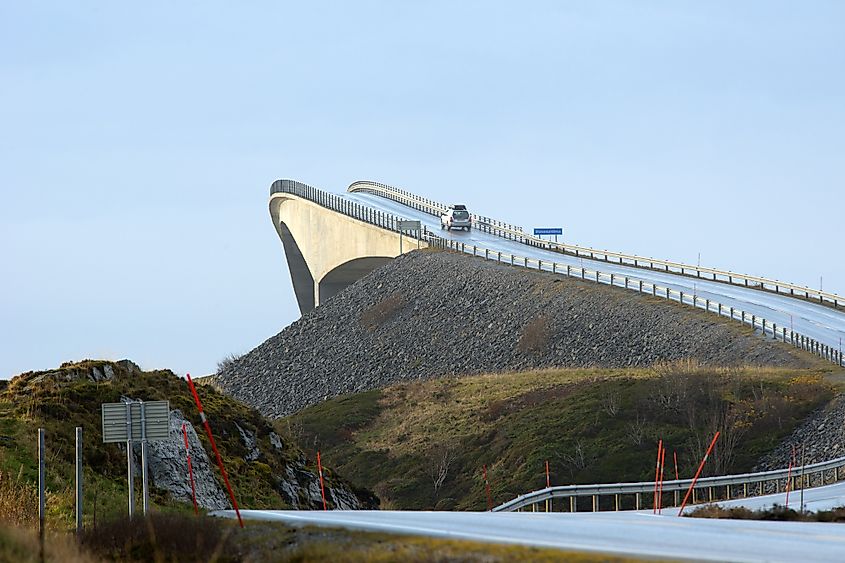
Tourists who are thinking of driving the Atlantic Ocean Road should be aware that there are 60 hairpin turns on it. It is also frequently hit by strong ocean currents and hurricane winds, with storms often bringing high waves crashing into the bridges' pavement. Portions of the bridges' designs are leaning, and some have steep inclines. Conversely, people are a threat to the islands along the ocean road and the span that it was built upon. Some of the islands have wet marshlands which are protected, though often times tourists still trample on them. For this reason, hikers and sightseers venturing away from the highway should use the marked trails instead. Some tourists also ruin nature trails with the trash litter and vehicular emissions and runoff that they leave behind.











